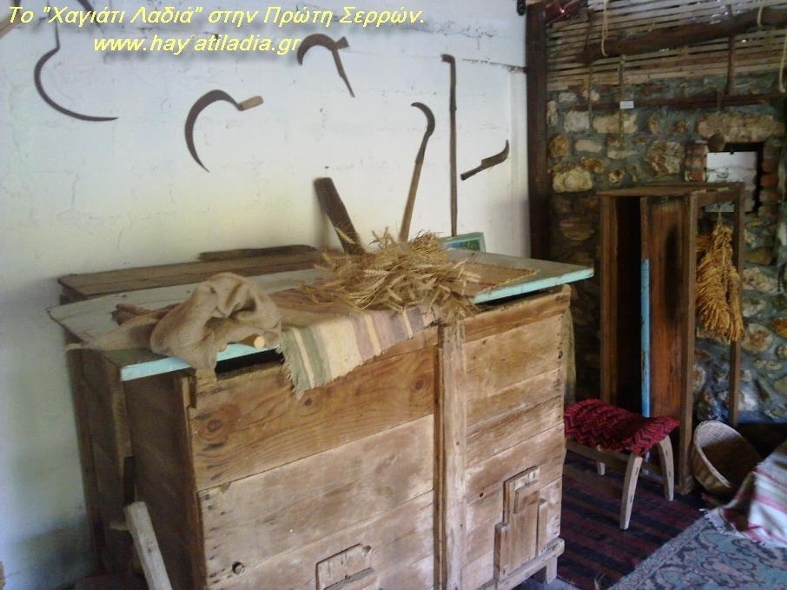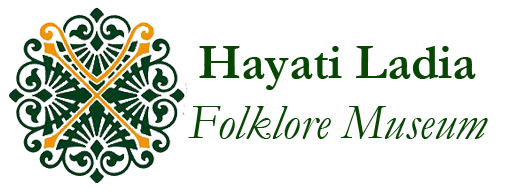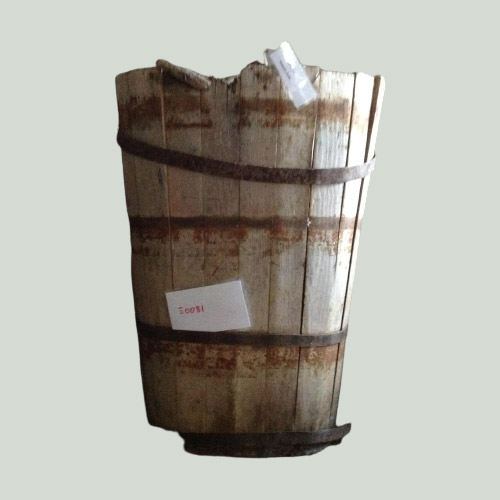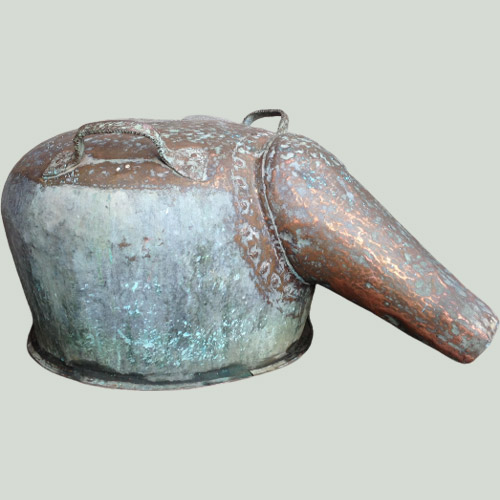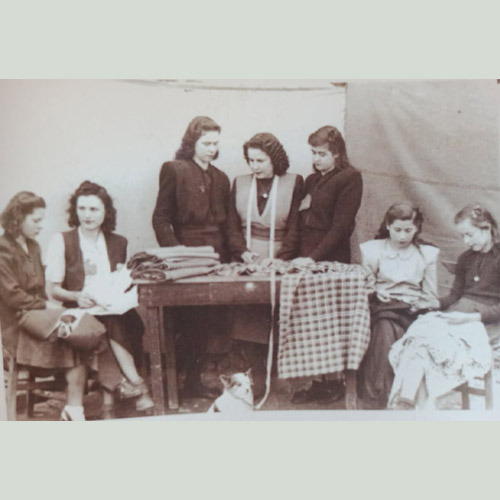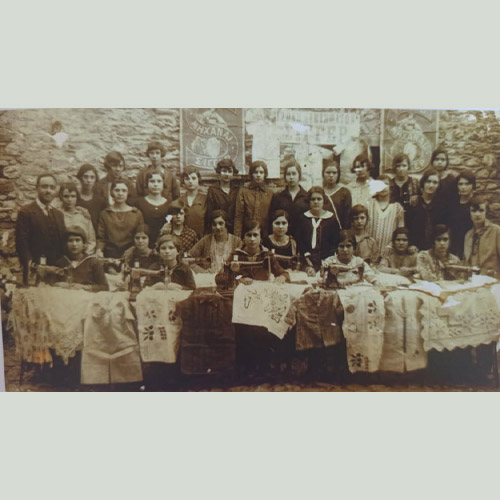The collection of the Folklore Museum Hayati Ladia consists of about 800 objects, dating between 1870-1960. Most come from Proti and the surrounding area and describe the daily life of pre-industrial society. For the better management of the collection, it was recorded and documented. The objects were assigned a unique tax code and documentation tabs were formed according to the international standards SPECTRUM and CIDOC - ICOM.

Achilles and Daphne Ladia welcome us to their home…
Achilles
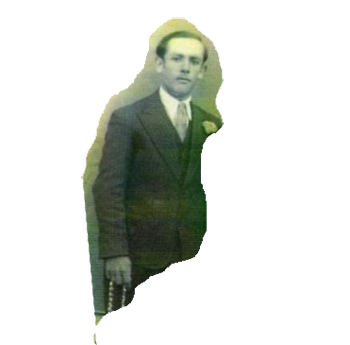
"My name is Achilles, I was born in 1910 in Kiupkioi and I am the youngest son of the Ladia family. In 1935 I married Daphne Nouni and we had 6 daughters. According to customary law I am the heir of the paternal house and in charge of my parents "Vangelis and Vangelis Ladias. We all live together in the house that my father bought from the Muslim Mehmet Kehagia in 1919. The tobacco warehouses in the yard were built in 1925 and were the workplace for me and Daphne for our whole life."
Daphne
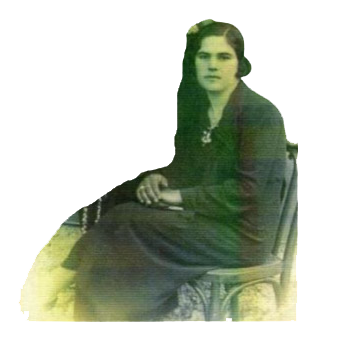
"I am Daphne. In my life I am full of work and children. Together we will see my house, which offered me everything. The tobacco, the vineyard and the grain. My house, which changed with the people, which changed around me. . "

Evangelos Ladias

The main occupation of the people of the house is tobacco production
In the 20th century the cultivation of tobacco is the dominant agricultural occupation in Proti, Serres and in the villages around Paggaio. The "basmas" variety, one of the most exquisite varieties of world tobacco production, thrives in the lands of the region. The high demand for eastern tobacco and the high commercial price of basma, contribute to the economic prosperity of the region.
The tobacco growing cycle starts in February and ends in October. Family members work non-stop for the common good, without the requirement of a salary. Mutual assistance, after all, is the only way to survive at home. The woman-mother, in addition to the continuous work in the field, is also responsible for the household chores. Older children take care of the younger ones and from pre-adolescence follow their parents in the tobacco fields. Child labor is considered self-evident and part of the education of the child, who leaves school during the months of intensive work. Law 4029 of 1912 "On the work of women and minors" protects the right of children to education and prohibits work before the age of 12, but the customary rule prevails over the law, as does the need for labor. The work of women and children in tobacco growing is of great importance for the economy of the time.
In the summer months when jobs increase and the hands are not enough, the pre-industrial society employs the network of kinship relations. The mahala families exchange labor power as part of mutual aid. When this is not possible or not enough, farm workers are hired. Workers can be permanent on large crops or seasonal on smaller ones, locals without a lot or foreigners moving from non-rural areas.
The tobacco growing cycle starts in February and ends in October. Family members work non-stop for the common good, without the requirement of a salary. Mutual assistance, after all, is the only way to survive at home. The woman-mother, in addition to the continuous work in the field, is also responsible for the household chores. Older children take care of the younger ones and from pre-adolescence follow their parents in the tobacco fields. Child labor is considered self-evident and part of the education of the child, who leaves school during the months of intensive work. Law 4029 of 1912 "On the work of women and minors" protects the right of children to education and prohibits work before the age of 12, but the customary rule prevails over the law, as does the need for labor. The work of women and children in tobacco growing is of great importance for the economy of the time.
In the summer months when jobs increase and the hands are not enough, the pre-industrial society employs the network of kinship relations. The mahala families exchange labor power as part of mutual aid. When this is not possible or not enough, farm workers are hired. Workers can be permanent on large crops or seasonal on smaller ones, locals without a lot or foreigners moving from non-rural areas.

The self-sufficiency of the house
The economy of the pre-industrial age is based on sustainability, reuse and processing. The limited production of products also limits the needs of man, most of which were covered within the house.
In the first of the 20th century, along with tobacco, the "good households" cultivate their cereals and vineyard. So the house always has its flour, bread and wine…
The smaller farmers, who have a few acres, focus exclusively on tobacco growing, which is more profitable.
In the first of the 20th century, along with tobacco, the "good households" cultivate their cereals and vineyard. So the house always has its flour, bread and wine…
The smaller farmers, who have a few acres, focus exclusively on tobacco growing, which is more profitable.

From the loom to the… singer
The loom contributes to ensuring the self-sufficiency of the house of the pre-industrial period. Occupies the brightest room. Girls learn to weave at a young age, the household loom is exclusively a female occupation. In non-existent homes, the dowry is assigned to professional weavers or weavers.
The female tobacco grower does not have time for the loom, the large tobacco growing cycle lasts about ten months and this is a necessary hand. Only in winter can she embroider and weave, channeling her creativity.
The female tobacco grower does not have time for the loom, the large tobacco growing cycle lasts about ten months and this is a necessary hand. Only in winter can she embroider and weave, channeling her creativity.
Woven and embroidery.
Products of female creativity.

School of Housekeeping
The family schools operated from 1944 to 1979. Their purpose was the national development and the religious education of the girls in the outlying areas of the country, after the Bulgarian occupation and the civil war. The girls who left school early went to school for three years, either as full-time or part-time students, attending only a few classes. They taught sewing, handicrafts, weaving, carpet weaving, religion, hygiene and agriculture.
The curriculum was tailored to the model housewife-farmer-mother, but improved the living standards of many women who went on to work as educators, cooks, bankers and provided a solution to the food problem. The school of Proti operated from 1949 until 1956.
The curriculum was tailored to the model housewife-farmer-mother, but improved the living standards of many women who went on to work as educators, cooks, bankers and provided a solution to the food problem. The school of Proti operated from 1949 until 1956.

The ondoudi
The oud is a versatile room on the ground floor of the house. It is used for cooking, as a living room and on winter nights the children sleep in it because it is warm from the stove or the fireplace.
Pre-industrial society uses natural resources to a limited extent as they are not readily available.
Picture right: wood stove with oven, used for heating and cooking

The living room
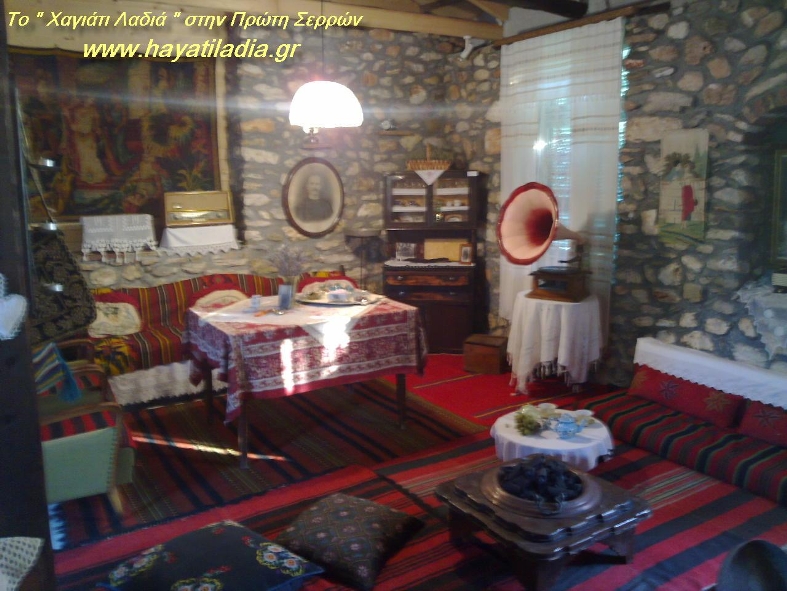
The bedroom
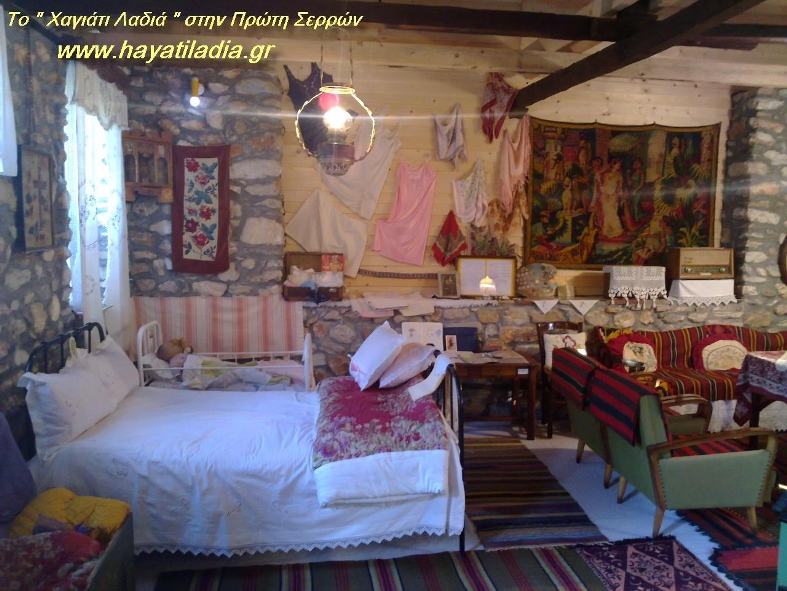
Viticulture and its tools
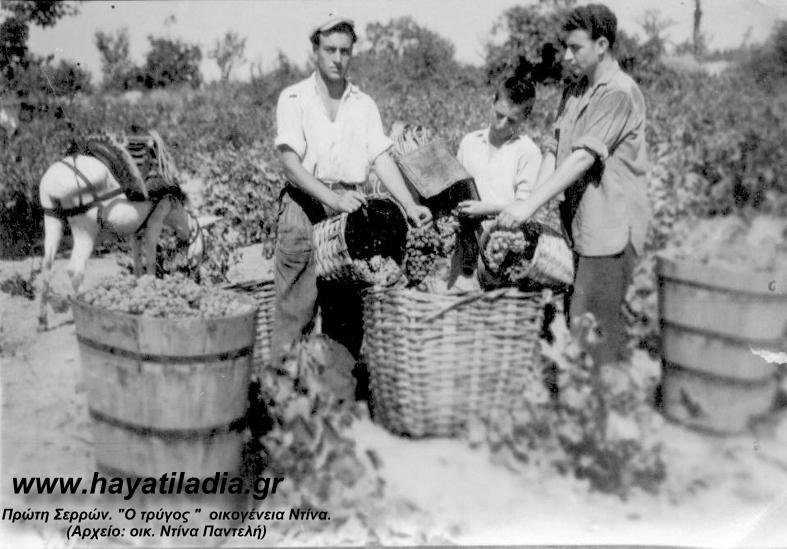
The kitchen
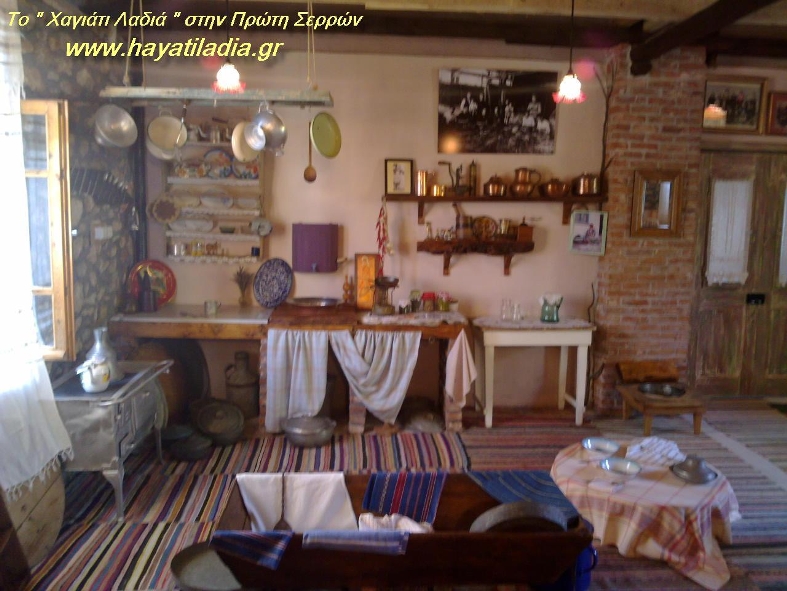
Grandma's loom
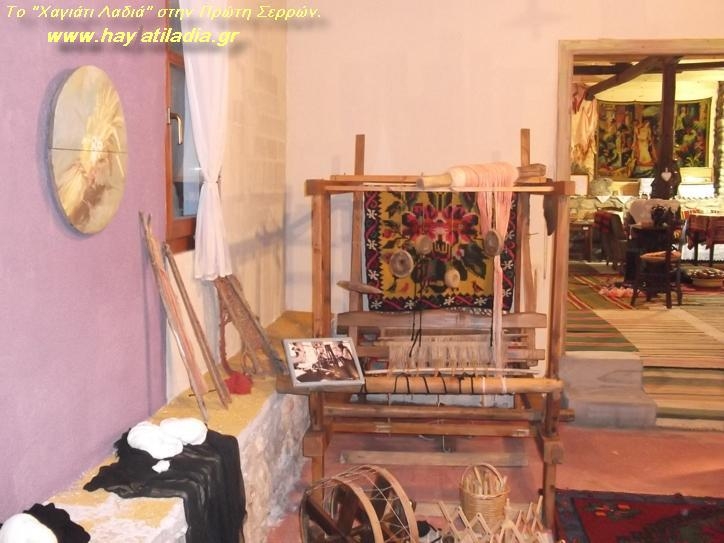
Tobacco growing & its tools
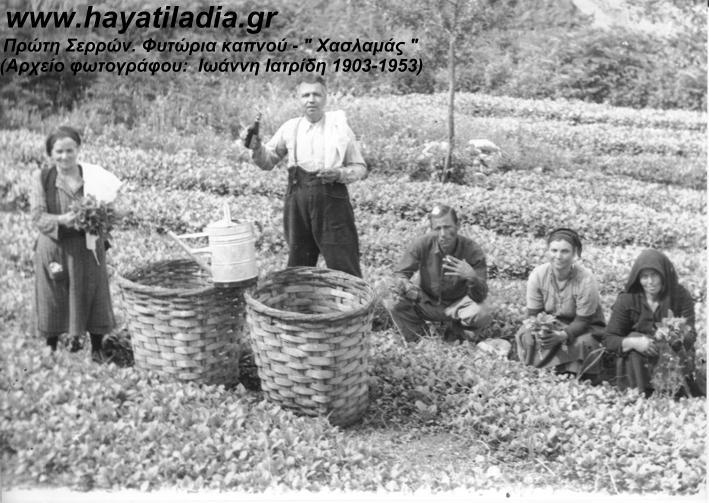
The "being" with the meder
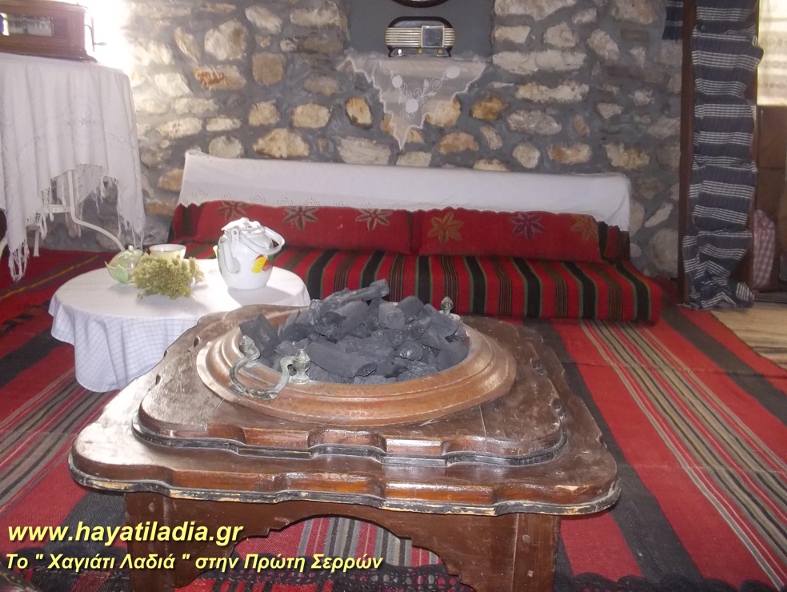
The tools of summer
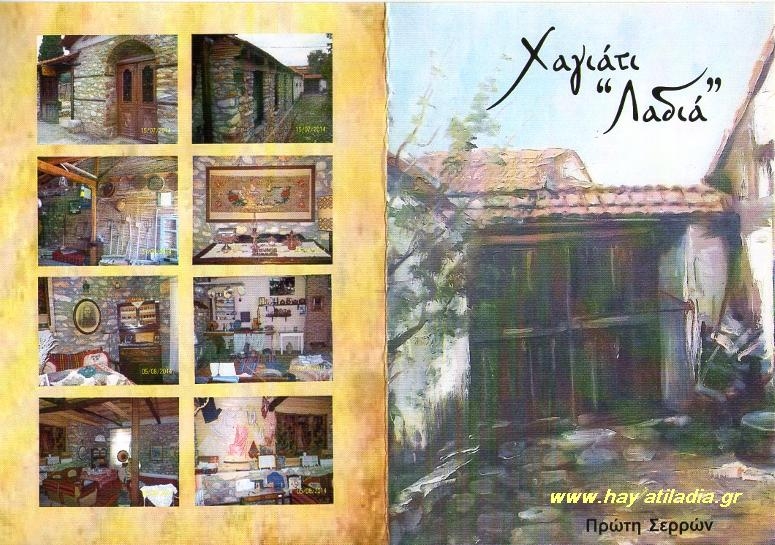
Storage items
